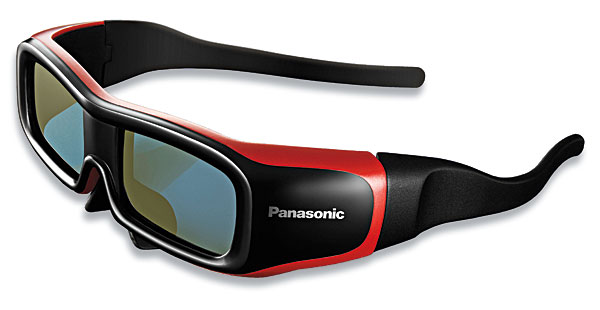Panasonic TC-P50GT30 3D Plasma HDTV Page 3
In terms of black level and shadow detail, the GT30 did very well. The darkest scenes in Master and Commander: The Far Side of the World were impressive. And the star field that opens Stargate: Continuum displayed a density of stars, from the dimmest to the brightest, that often escapes lesser sets. That star field was also less affected than on most sets when the bright white title pops up over it.

The only problem here was that the GT30's mid-brightness tones were a bit lightened, which brought shadow detail up a bit too much. This may have been due to its lower gamma in the Cinema mode (see "HT Labs Measures").
We still had our review sample of last year's top-of-the-line TC-P50VT25 on hand, so a comparison between that and the GT30 was clearly irresistible. There was only time for a 2D face-off, but one thing was clear: In terms of picture quality, the GT30 was neither better nor worse than the VT25 in any respect save one: The VT25 had better blacks—0.008 ft-L on the GT30 versus 0.004 ft-L on the VT25. The visible difference on a full black field was subtle but unmistakable. This was disappointing, as we were hoping for steadily increasing improvement in Panasonic's already very good black levels. The GT30's overall performance is still near the current state of the art for plasma, which can still beat the usable black-level performance of most LCDs. But note the word current in the last sentence. Even the best black-level measurement turned in by current flat panels is still well short of our gold standard: the 0.001 ft-L measured on the last generation of the now long-discontinued Pioneer Kuros.
3D Performance
Surprisingly, the GT30 outdid my expectations in 3D without a full color calibration. Its technically inaccurate color didn't look obviously wrong, and in all other respects, its 3D performance was comparable to that of the ST30 and VT30, which I was able to calibrate separately for 3D.
Like all sets in our experience, the brightness and color of the GT30 were somewhat muted in 3D. But in its Custom mode, those weren't major concerns, and it produced no obvious 3D ghosting. Both Avatar and A Christmas Carol have exhibited serious ghosting on some active-glasses sets, but not here. The near total lack of this phenomenon may well be a major factor in this set's crisp, vivid 3D performance. I say "near total lack" because there's no way of knowing if this or that piece of some as-yet-unseen 3D material will conjure up an unwelcome apparition or two. But thanks to plasma's naturally fast response time, not to mention the faster phosphors Panasonic introduced with last year's first generation of 3D sets, I didn't find ghosting to be an issue here.

As with virtually all plasmas, this one exhibits the sort of off-axis performance that no LCD can match, which was true for both 2D and 3D. The color and 3D effects held up solidly as far off center as anyone would care to sit—at least 45 degrees. Sit beyond that, and parallax takes over (with an increasingly trapezoidal image), even as the basic picture quality remains virtually unchanged. Nor was head tilt ever an issue in 3D, as it is in LCD sets.
About that 2D-to-3D conversion mode. It provided a modest degree of depth to 2D material, but as I've said before, if I'm going to sacrifice brightness for 3D, I prefer the real thing.
Conclusion
The GT30 is a good set, but apart from slightly spiffier aesthetics, more cable clearance for a wall mount, an additional HDMI input, a PC input, and THX certification—which is of questionable value in this particular case—it offers little that you can't get in the ST30 for $400 less. Also, the trouble I had calibrating it and the color tint I saw would steer me toward the ST30 anyway.













































